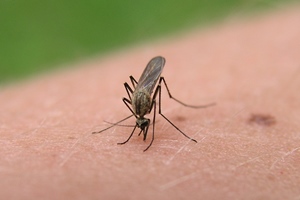Family Road Trips and Your Health
 A family road trip can be a wonderful experience that creates life-long memories for parents and children alike. In fact, a recent survey by Jiffy Lube International suggests that road trips remain an American favorite, with 78% of those polled agreeing that they make the best vacations. However, spending long periods of time sitting in a car on the open road can have its drawbacks, too. This is especially true if you already spend a lot of time commuting or if you already have back or neck problems.
A family road trip can be a wonderful experience that creates life-long memories for parents and children alike. In fact, a recent survey by Jiffy Lube International suggests that road trips remain an American favorite, with 78% of those polled agreeing that they make the best vacations. However, spending long periods of time sitting in a car on the open road can have its drawbacks, too. This is especially true if you already spend a lot of time commuting or if you already have back or neck problems.
If you already spend many of your waking hours in a motor vehicle—either commuting to and from work or as part of your job—it’s fair to wonder whether a family road trip is really a good idea at all. After all, just the act of sitting for long periods of time has been called “the new smoking”. But if you do decide that a road trip is right for you and your family, there are some things that you can do safeguard your musculoskeletal health and to be more comfortable.
Tip #1: Be sure that seats, seatbelts and head restraints are all properly adjusted. Remember that even the best safety equipment won’t provide as much protection as it should if it’s not positioned correctly.
Tip #2: Get comfortable as early as possible in your trip. Little things that would only annoy or irritate you in the course of a 10-minute drive to the dry cleaner can translate into major aches and pains during a much longer trip. Avoid sitting on wallets or mobile phones and consider specialized supports or cushions that provide additional support for your lower back, neck or buttocks.
Tip #3: Keep on moving. Sitting still for extended periods of time—even in well-designed car seats that have been properly adjusted—is bad for your back and for your health more generally. For this reason, it’s important to change the position of your seat and shift your weight slightly every 15-20 minutes. Plus, be sure to get out of the car to stretch your legs and back at least twice each day. Once every 60 to 90 minutes is even better. A little bit of exercise at rest stops is a very good idea, since regular movement helps to keep vertebral discs, muscles and ligaments healthy.
Tip #4: Keep hot and cold options on hand. If you’re already experiencing back pain, alternating between hot and cold can often provide relief. Preparation is the key—it’s important to have compresses or hot/cold water bottles and warm/cold packs on hand if you intend to use this strategy. It can also be handy to bring along an ice chest as well as a heating pad (with cigarette lighter adapter).
Tip #5: Get your chiropractic treatment before you hit the road and schedule a follow-up for the week you return. If you’re like most people, it’s easy to forget (or put off) important details in the hectic run-up to a vacation. With lots to accomplish at work and at home before you can leave, doctor’s appointments sometimes fall through the cracks. Don’t let it happen to you! Getting adjusted before you hit the road can improve your chances of having a pain-free, fun-filled experience.
While the prospect of taking long road trips might seem daunting for people who already have back or neck pain, a little bit of planning and a flexible itinerary can make all the difference. If you and your family are considering a summer road trip and would like some advice about how to get the most out of it, please call or visit our office today! We’re here to help!
 With warm summer weather in the forecast, many people take the opportunity to spend more time in the great outdoors. Camping, hiking and boating are all on the agenda! But beware—being outside means sharing the wilderness with all of the creatures that live there. This includes the insects!
With warm summer weather in the forecast, many people take the opportunity to spend more time in the great outdoors. Camping, hiking and boating are all on the agenda! But beware—being outside means sharing the wilderness with all of the creatures that live there. This includes the insects! Seasonal Affective Disorder (SAD) in winter is a widely-known phenomenon. There is less sunlight during winter days, which affects the serotonin (“happy” hormones) produced in response to light striking our pineal gland, causing depression and listlessness. But not many people are aware that SAD has a summer equivalent as well. Studies performed on people in countries near the equator have found that their populations often suffer from SAD in the summer months. But what can be its cause?
Seasonal Affective Disorder (SAD) in winter is a widely-known phenomenon. There is less sunlight during winter days, which affects the serotonin (“happy” hormones) produced in response to light striking our pineal gland, causing depression and listlessness. But not many people are aware that SAD has a summer equivalent as well. Studies performed on people in countries near the equator have found that their populations often suffer from SAD in the summer months. But what can be its cause? With summer weather heating things up across much of the country, swimming is a great way to cool off and have some fun! But did you know that it’s also an excellent way to increase your fitness, help control your weight and improve your overall mood? Plus, swimming is a type of exercise that people of any age and physical ability can enjoy. It’s easy on the musculoskeletal system while at the same time providing a good aerobic workout.
With summer weather heating things up across much of the country, swimming is a great way to cool off and have some fun! But did you know that it’s also an excellent way to increase your fitness, help control your weight and improve your overall mood? Plus, swimming is a type of exercise that people of any age and physical ability can enjoy. It’s easy on the musculoskeletal system while at the same time providing a good aerobic workout.